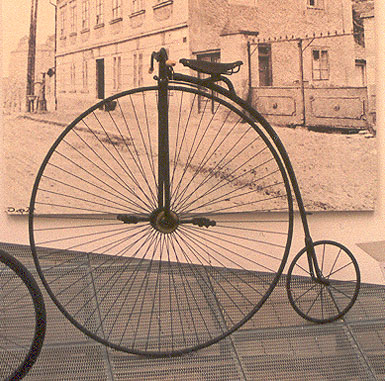Europeans take cycling very seriously, says David Chernushenko. Several cities have integrated their cycling infrastructure not simply into their roads and parks, but also into their vision of public transit.
In Ottawa, suburbanites would balk at the notion of riding their bikes into work -- and justifiably so, according to Chernushenko. But he says that there are a lot of "closet cyclists" that would jump on their bikes if the appropriate system were in place.
"With the right system, we could be doing it much more of the year and we could have way more people doing it," he says, acknowledging that winter months often make it far too difficult to feasibly face the roads.
Referencing existing systems in
Paris and
Lyon, France, Chernushenko suggested an adopt-a-bike program that would see commuters from outlying suburbs be able to ride their bikes to the nearest train station. Upon stepping off the train somewhere in and around downtown, they could then gain access to rented bikes at locations throughout downtown.
In order for that system to work, however, the proper infrastructure must be built. Chernushenko suggested that if the City commenced work immediately, it would take 10 years to complete Ottawa's transformation into a bike-friendly city.
"We would start by saying every time a street or a sidewalk needs repair, we can seize that opportunity not just to replace the sewer infrastructure and the telecom cables and everything else that’s there. We’re actually going to redesign that street," he says, suggesting that residents from Nepean to Beacon Hill could conceivably cycle to work on a daily basis.
Instead of building infrastructure on the existing roads, Chernushenko recommended finding room on existing sidewalks -- a tough task, he says, because pedestrians are already short on space throughout downtown. The paths would be dedicated to cyclists, though, and it would mean expanding sidewalks at the expense of road width.
"Imagine Bank Street, where the two lanes of traffic right now are going to be half a metre narrower than they are now in order to create a metre-wide bike lane without making the existing sidewalk even narrower," Chernushenko says.
It would be a long-term project, but Chernushenko is fine with that.
"In a way I think that is a good thing. Gradual conversion often allows naysayers to see this isn’t so bad after all. You drop something new on people all at once and you’re going to have a lot of critics who are going to fight it," he says.
Copenhagen, Denmark, is moving even further than integrated cycling paths. Chernushenko says that city is developing "
bicycle highways" exclusively for cyclists riding to work.
"Maybe you’ll have to stop once or twice on the entire ride in from the suburbs. Imagine getting on in South Keys or Kanata and not having a stop sign or a red light between there and downtown. What a concept!
"
_________________
Part Two of David Chernushenko's Reflections on Ottawa Transit, a TransitOttawa.ca exclusive:Part One: IntroductionPart Two: CyclingPart Three: Inside the GreenbeltPart Four: Serving the suburbsPart Five: Ottawa's subway


